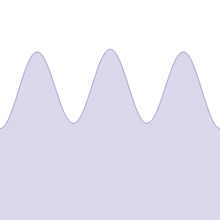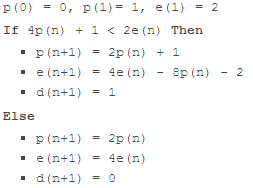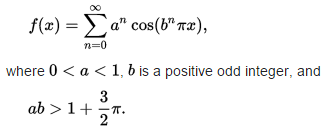Here I discuss four interesting mathematical problems (mostly involving famous unsolved conjectures) of considerable interest, and that even high school kids can understand. For the data scientist, it gives an unique opportunity to test various techniques to either disprove or make progress on these problems. The field itself has been a source of constant innovation — especially to develop distributed architectures, as well as HPC (high performance computing) and quantum computing to try to solve (to non avail so far) these very difficult yet basic problems.
And the data sets involved in these problems are incredibly massive and entirely free: it consists of all the integers, and real numbers! The first two problems have been addressed on Data Science Central (DSC) before, the two other ones are presented here on DSC for the first time.
Four rudimentary math problems with no solution
- Take any positive integer n. If n is even, divide it by 2 to get n / 2. If n is odd, multiply it by 3 and add 1 to obtain 3n + 1. Repeat the process indefinitely. Does the sequence eventually reach 1, regardless of the initial value? I wrote about this a while back, but added some interesting contributions very recently, especially about a possibility to solve it with Markov chains. It is still one of the most famous unsolved mathematical problems associated with chaos theory.
- The above picture shows an algorithm that computes the digits in base 2 for SQRT(2) / 2: click here for details. While it is now an established (proven) result that has been generalized to other square roots, the big question is: can we find such an algorithm for transcendental numbers like Pi or e, and especially one that is useful? It also raises epistemological questions, such as whether these digits (generated by a very rudimentary algorithm) can be considered as random and safely used for encryption. These digits successfully pass all tests of randomness. However, whether any of these numbers (including Pi) have the same proportion of zeros and ones in their binary expansion, is still unknown. I once offered $500k to anyone providing a solution.
- Can you prove whether or not the following elementary series (known as Flint Hill series) is converging: SUM{ (csc n)^2 / n^3} with the sum over all n > 0, and csc representing the cosecant function. Click here for details, and check the section entitled Examples of Numerical Series. The convergence depends on how well Pi can be approximated with rational numbers (which is unknown as of yet). More specifically, the values of n with large numerical contributions to the sum are the numerators of the continued fraction convergents of Pi, a sequence beginning with 1, 3, 22, 333, 355, 103993, … Max A. Alekseyev proved in 2011 that if the series converges then the irrationality measure of Pi is lower than 2.5, which is much smaller than current known bound of 7.6063.
- Here is an example of a pathological mathematical function that is continuous everywhere, but nowhere differentiable. It is one of the first examples of fractals, discovered in 1872, and known as the Weierstrass function. The picture below is from the Wikipedia article referenced here.

And for those interested in mathematical logic and measure theory, here is an interesting paradox, which somehow allows you to duplicate a ball made out of gold, into two balls, each having the same size as the original ball (though it does not double the mass.) It depends on the axiom of choice. The Banach–Tarski paradox is a theorem which states the following: Given a solid ball in 3‑dimensional space, there exists a decomposition of the ball into a finite number of disjoint subsets, which can then be put back together in a different way to yield two identical copies of the original ball. Indeed, the reassembly process involves only moving the pieces around and rotating them, without changing their shape. However, the pieces themselves are not “solids” in the usual sense, but infinite scatterings of points whose volumes are un-measurable.
DSC Resources
- Services: Hire a Data Scientist | Search DSC | Classifieds | Find a Job
- Contributors: Post a Blog | Ask a Question
- Follow us: @DataScienceCtrl | @AnalyticBridge
Popular Articles


